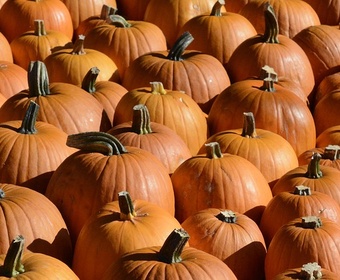
CHOOSING VEGETABLES
- Follow the seasons.
- Find out more and experiment.
- Beauty isn’t everything.
- Use all your senses.
- Ideally local, organic, etc.
The top tip from the professionals when choosing vegetables – and you’ll hear us say it over and over again – is:
Follow the seasons
Seasonal vegetables aren’t just the best choice for the environment, they’re also the freshest, the best tasting and the cheapest. Think seasonal!
It makes sense really
In the past, following the seasons went without saying in every home. And professional kitchens have never stopped, both because it means the best ingredients and on financial grounds. In countries with strong farming traditions, with mild winters and where crops can be grown all year round, it’s still the case that shops and consumers keep an eye on what the season has to offer. In countries that are less lucky, it isn’t as obvious a choice.
Challenge yourself
Pick up seasonal vegetables that you wouldn’t usually pick. Try out new dishes and practice. These pages will give you plenty of tips for getting started.
Challenge yourself, start with the vegetables and make the protein the accompaniment.
– Per Renhed, F12, The Restaurant, and others
Check the variety
There are lots of kinds of tomatoes and lots of types of potatoes. Don’t forget that this also goes for other items in the vegetable section. It might only have one variety of avocado, aubergine or carrot, but that doesn’t mean it’s the same variety you had last time. Check the variety (or try to) and adapt your recipe, your flavorings and your technique…
Preferably local
Check the source and shop locally as far as possible. That way you’ll get the best vegetables, the best prices, and the lowest negative environmental impact. All at once.
Organic tastes better – especially if you know that’s what you’re eating.
– Joel Aronsson, Fäviken, Krakas, and other restaurants
Where and when it’s grown make a difference
Different places and different conditions have different impacts on vegetables. Learn a few definite hits (local, seasonal strawberries, for example) and go for ingredients and origins that you know work.
Beauty isn’t everything
As consumers, we shop with our eyes so much that it’s starting to be a problem. Supermarkets are buying in more and more of the most attractive looking vegetables that sell instead of the ones that taste best but might look a bit uglier – which we reject. But with the information on these pages we can do something about this, together. A crooked vegetable can be just as good as one that looks superficially perfect – or better. Brown marks can be cut off. Try it. It might be cheaper and it might taste better too.
Class 2
This is the designation for vegetables that don’t meet the beauty criteria (like that famous crooked cucumber in the European Parliament debates) but which are approved by the EU on all other levels. Most retailers don’t take this produce but you’ll get a lower price for this same, great ingredient if they do.
Ripeness
Here we’re back to seasons again. Locally grown ingredients at the right season have more time to develop before they’re harvested – and have been transported a shorter distance for a shorter time. That makes a difference.
You have to make do with what you've got. You have to work harder during the winter.
– Joel Aronsson on choosing seasonal vegetables all year round
Use more senses
Look, smell, feel – and ask. Don’t squash your fellow customers’ avocados, but use more of your senses when shopping for veg. Ask what it is you’re buying and don’t worry about sticking your nose in and having a sniff. Make demands of your vegetable supplier.
Organic and local
These are two different things. For ingredients that taste better and leave a smaller environmental footprint, choose vegetables that are both.


